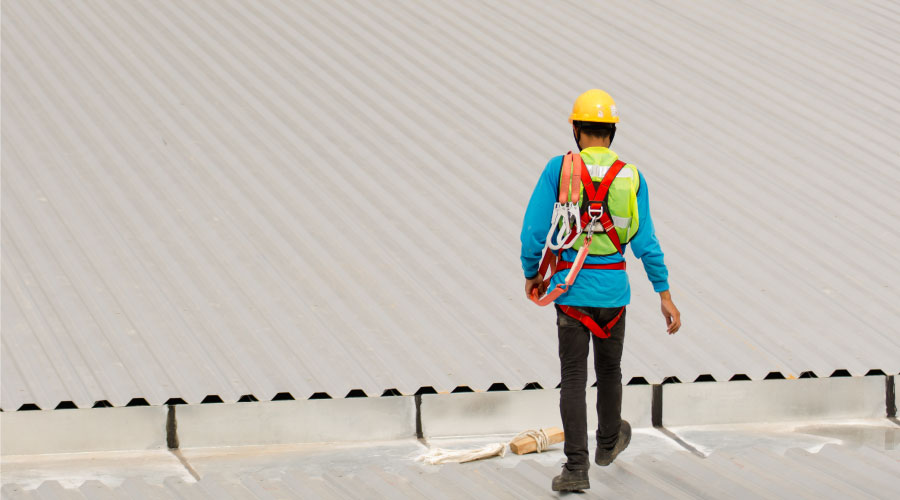
Implementing an Effective Roof Management Plan
Both technology and staff can be leveraged to implement a roof management plan. August 24, 2023
By Jeff Wardon, Jr. Assistant Editor
Roofs are an important part of any facility, as they act like shields protecting the facility from outside hazards. Given this, keeping them well-managed and maintained is crucial to a facility’s functioning. To demonstrate that, Tony Robinson, senior associate and district manager at Gale Associates Inc. will present the session “Implementing a Roof Management Plan at Your Facility” at NFMT Remix from October 25 to 26 in Orlando, Florida.
NFMT: What are the key factors to consider when developing and implementing a roof management plan for facilities?
Robinson: Well, there are several factors to consider and three of them would be to perform a proper inspection, an analysis and recommendations. In doing those three things, you want to include the facility personnel in that conversation as well as interviewing any of the building occupants. The people in the building know what the conditions are throughout the year, so you want to tap into a bit of that knowledge as well.
Then there is documentation, whether it is an interactive or traditional type of documentation where we write down our field notes. The interactive type is using more technology where you use a tablet or some sort of electronic device to capture some of your documentation. You want to take photos and develop a roof plan when you are out there on the roof. That then allows you to locate any defects that you might see on that plan.
After that, there are corrective procedures of identified issues you have. That plan needs to consider how you want to do those repairs. When I say repairs, I mean proper repairs, and not just a quick little temporary fix. You must include that information and the quality of products that you use to make those repairs.
Finally, you must consider preventative maintenance procedures. What are you going to do once you find that information? You must have that included in the program as well. Also, do you do annual or a semiannual inspection to review everything again? Then how do you implement those repairs? You have to think about all those things within that first order of factors to consider.
NFMT: How can facility managers effectively assess the condition of a roof and determine the appropriate maintenance or repair strategies to include in the management plan?
Robinson: First of all, you have to access the roof and get up there. How do you do that? You could utilize the facility maintenance personnel where they can go take a look at everything. You can use their issues logs or their work logs that have been addressed with the building or facility. So, you kind of track that information as well.
You could also use professional roof building envelope consultants. What they can do for the owner is provide an assessment and provide a report. They can determine the priority list based on repair versus replacement – what has been determined should be repaired versus what should be replaced for each roof area. That assessment also can include immediate, short term, intermediate and long-term repairs or replacements. Again, the type of recommended repairs can be included in that condition assessment as well. Then within that they can provide a five-to-10-year plan to address the repair or replacement needs. They can also include smaller timelines as well for the immediately needed items.
Another way that the managers can effectively assess the condition of the roof is to not only use a professional roofing consultant or their maintenance personnel, but your roofing contractor can do that as well. Those are the three ways to effectively assess the condition.
NFMT: What are some best practices for prioritizing roofing projects within a facility's roof management plan while taking into account budget constraints?
Robinson: Most facility owners have a limited budget to work with and that has to be taken into consideration. To do that, facility owners would have to make sure they determine what the immediate needs are based on the roof evaluation. Once the assessment is done and the prioritization has been done, they have to base that off the budget. That is the money that is available when you start out. You only have so much this year allotted, so you take that immediate need and say what can we get done with this with the amount of money that we have available to us? Well, once assessments are done, that is where the rubber meets the road.
Once you have an assessment done, you have already now prioritized based on your immediate needs, your intermediate needs and long-term needs. Now as you begin to plan and budget for each subsequent year, you know what funds you can ask for now because here is a group that you already have established. So, for my budget next year, I need this amount of money to do my roof maintenance and then next year it could be something that was more intermediate. Again, that can be anywhere from a five year to 10-year plan. You just keep working on the assessment program, that way it allows you to work within the budgets.
Evaluating the available budget and determining what can be achieved with the available funds is very important. Having that asset management can help you do that. Once the management plan has been established, the owners can request funding as needed for the next few years that they feel they need to complete some of the roof replacements.
NFMT: How can technology and digital tools be leveraged to enhance the implementation of roof management plans?
Robinson: This is where things have changed quite a bit. Cloud-based roof and asset management plans are available that allow for inputting roof evaluation data and providing reports based on the information input into the programs. Photos, maintenance logs, repair records, etc. can be inputted and tracked and the long-range plan can be updated based on the information input into the system.
Reports can be generated to allow facility owners to plan for repairs by in-house maintenance staff or an outside roofing contractor. Once repairs are implemented, they can be tracked within the software. Once replacements are performed the information can also be input into the program and status gets updated to a new roof. Programs can also allow for a yearly aged factor of the new roof. This allows for tracking performance based on age and any repairs that have been made during the life of the roofing system.
To learn more about implementing an effective roof management plan, be sure to check out Robinson’s session at NFMT Remix this October. Register for Remix here.
Jeff Wardon, Jr. is the assistant editor for the facilities market.
Next
Read next on FacilitiesNet












